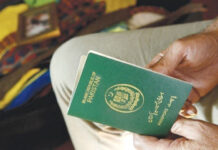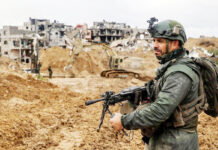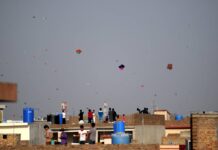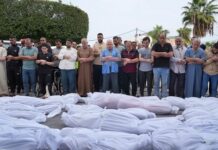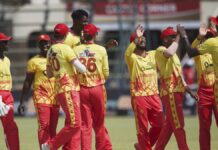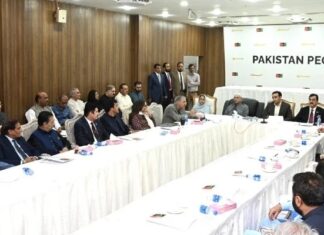Pakistan’s experiences in the development of the media has been invariably influenced by the way the country was governed during its 75 years of bumpy existence. With frequent interventions in the form of direct military rule to unspoken arrangements, the latest has been the hybrid.
All these experiences had a deep mark on the way we practice journalism and consequently how public opinion is formulated or has been built up during the seven decades. Also the way it has become the ‘narrative maker’ of sorts, not for the society; rather for the ‘ringmaster’ who can reign it in. Consequently the position of an external liaison wing of any influential institution has grown out of its intended mandate, with sometimes the self-proclaimed task of guiding the society itself.
In the backdrop of the above-mentioned developments, the state of journalism in Pakistan is well below the standards it practiced during the first 60 years of its existence. The print media, which by nature of its 24 hours’ time lag, the ‘privacy’ of the source, the room for the reporting as well as the editorial to synthesize the available information/ news story; the basics, which in turn help create a well-moulded opinion, the news story or editorial is fast losing its relevance as a ‘credible’ opinion.
Today, the opinion is influenced by; ‘real-time’ running commentary, which sceptical analysts rightly call ‘chasing the rearlights of a truck’ (truck ki bati kay peechhay daurhna). To fill up the intellectual aspect of that opinion; usually the news anchor relies on ‘who said’ or ‘what said’. The four ‘Ws’ of the news story are no longer important for the practitioner of new reporting; the well-oiled anchor, nor for the recipient audience.
The result of that style of journalism has been opinionated news reporting; which in an environment like Pakistan, where various pressure groups and institutions would like to be ‘only’ heard; that sort of compromised journalism is what is sought after. Here it may be pointed out that Pakistan is not the first laboratory for that sort of journalism. The West with all its standards of journalism, has been practising that in the domain of its external environment. While the standards of journalism are tolerated within the society; reflective in the fact that print publications still matter there. In the external environment where the military machines as well as the intelligence agencies run supreme, the entirely different breed of embedded reporting is groomed.
For obvious reasons, these models have been adopted in Pakistan; which can be safely termed as ‘hybrid-influenced journalism’ or ‘fifth-generation journalism’. The standard model of this type of journalism is the ‘activist-journalist’. He is not accredited to any particular group or institution in the first place; given the fact that the electronic channel openly or covertly subscribes to the views of a particular political group, institution or a political movement.
That journalist, if he is a ‘senior journalist’, will misuse his stature as a seasoned professional to influence the political opinion for his or her party of choice. Given the last five years of Pakistani journalistic experience, such a narrative can well be thinly veiled and any person can easily detect the political orientation of the ‘senior sahafi’.
The slow death of the traditional opinion-making infrastructures in Pakistan speaks of the future scenarios. It is the narrative which sells; not the chronology, timeline and an objective analysis. Regretfully, such states can be client ones, but not the game changers, even for themselves.
The other commonly available variant of activist journalist or a ‘suicide drone’ is the one actually trained for ‘fifth-generation’ warfare. However, the experiences after 9 April 2022 show that this variant has been used effectively against the originating infrastructures. These variants again include ‘bigger warheads’ means ‘not so senior sahafi’ and also the usual ‘suicide drones’.
The medium-category journalist is supposed to paint all the developments because the narrative does not serve the true picture and consequent rational analysis. Rather it is designed to serve the ‘party interests’. The suicide drone activist-journalist is a support ‘wingman’ of the medium cadre journalist.
The result of the narrative and counternarrative is a polarized narrative situation. In such a situation, rational journalism, or the one aimed at staying away from any particular narrative, runs the risk of not being read or even taken seriously. The narratives are well defined and there is no swing vote for any particular narrative.
Today seemingly, the strongest opposition grouping, the PTI, has the largest arsenal of well-oiled fifth generation ‘dastangos’ ready to push the party narratives. The PDM parties too are catching up with their own arsenal in the process. Filtering down to the application of narrative in the social media, in the case of Pakistan; Twitter, the Pakistani handles on either side of the political divide leave no stone unturned to hurl abuses, or engage in cryptic or below-the-belt conversation or graphic abuse, to make the point. Gone are the days, when the political and revolutionary narratives rested on a well articulated argument based on ideology and factsheets. Today, the party journalist is designed only for internal satisfaction of the committed or cult following. He or she is not tuned to win over anyone from the other camp or for that matter from the society.
With the political struggle being centred on the war strategy of propaganda, where truth is the first casualty, followed by objectivity, the original proponents of responsible media are few and subdued. The more abuse has a greater following. Anyone who can spin more stories and engage in the most name-calling has a greater chance to have higher ratings.
In the backdrop of these trends in the society; with serious journalism ceding its space to abuse, we see lesser demand for the printed matter on our market terraces and bookstores. The opinion of the common person regretfully is not being framed through reading a well-researched editorial piece or news story, rather what is the likely wish of the reporter concerned.
There are many complaints about fake news, ghost stories, breaking news, and so on, clouding the objectivity of the news available. However, it is the marketwise sense of the advertisers, which has hit hard at the need to impart quality journalism; which in fact is the best tutor of the public.
As things stand, Pakistan is going into another round of elections, which will possibly throw up a new political dispensation. Are we sure that the electorate has been taught and guided well by the fourth pillar of the state?. The answer is regretfully no. The political battle lines are very much visible along the cult following of the political parties in the run. The resultant governments are expected to follow the beaten tracks of the parties they follow.
Given the complex problems of governance, trade, commerce, law and order, foreign relations and economy, cult followings with beaten tracks might not be the scenario the country demands now. It seems that the decision of the clever monkey tasked with distributing the spoils of cheese amongst the hungry cats will determine which party will eventually sign the lifesaving deal with the IMF. The return of the Pakistani nation state to normalcy will again be decided not by an informative fourth pillar of the society, but a war of narratives.
The slow death of the traditional opinion-making infrastructures in Pakistan speaks of the future scenarios. It is the narrative which sells; not the chronology, timeline and an objective analysis. Regretfully, such states can be client ones, but not the game changers, even for themselves.


